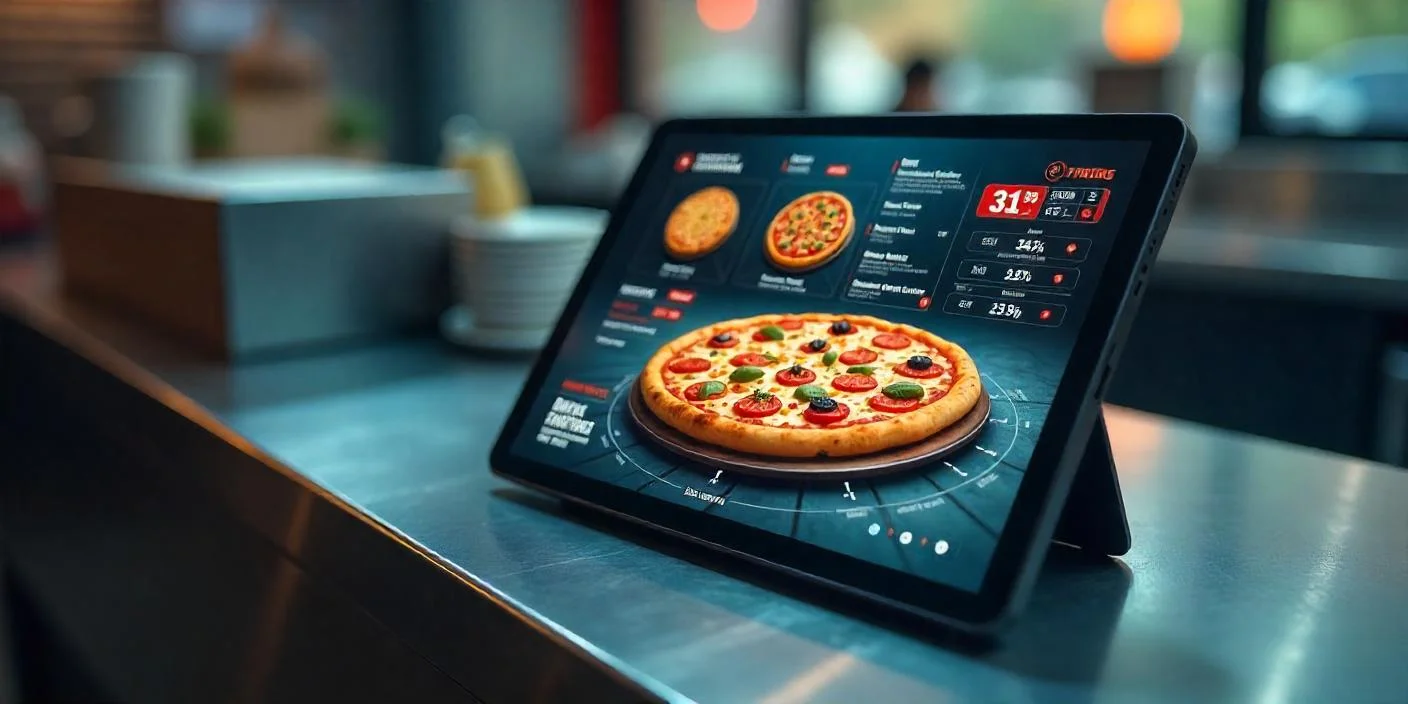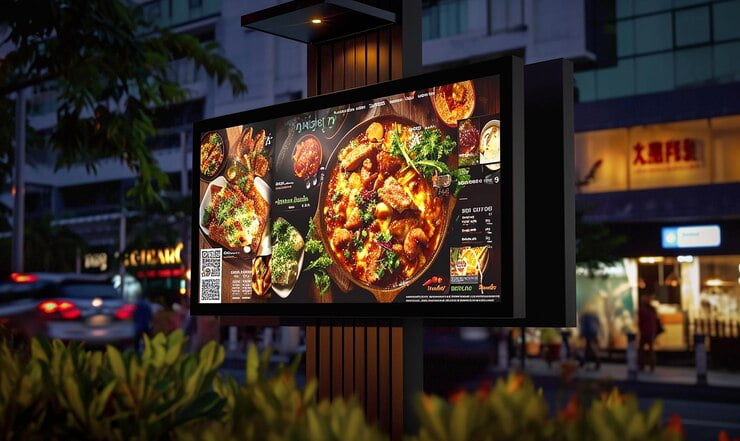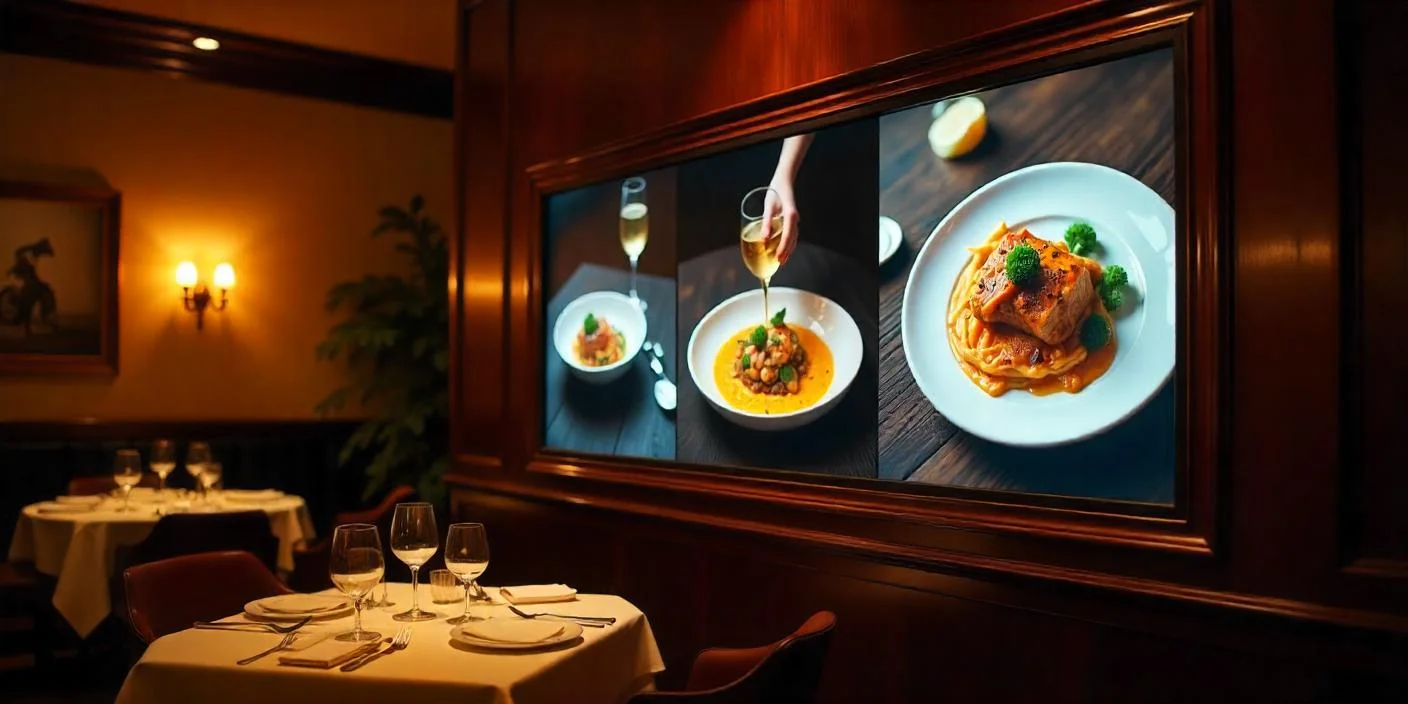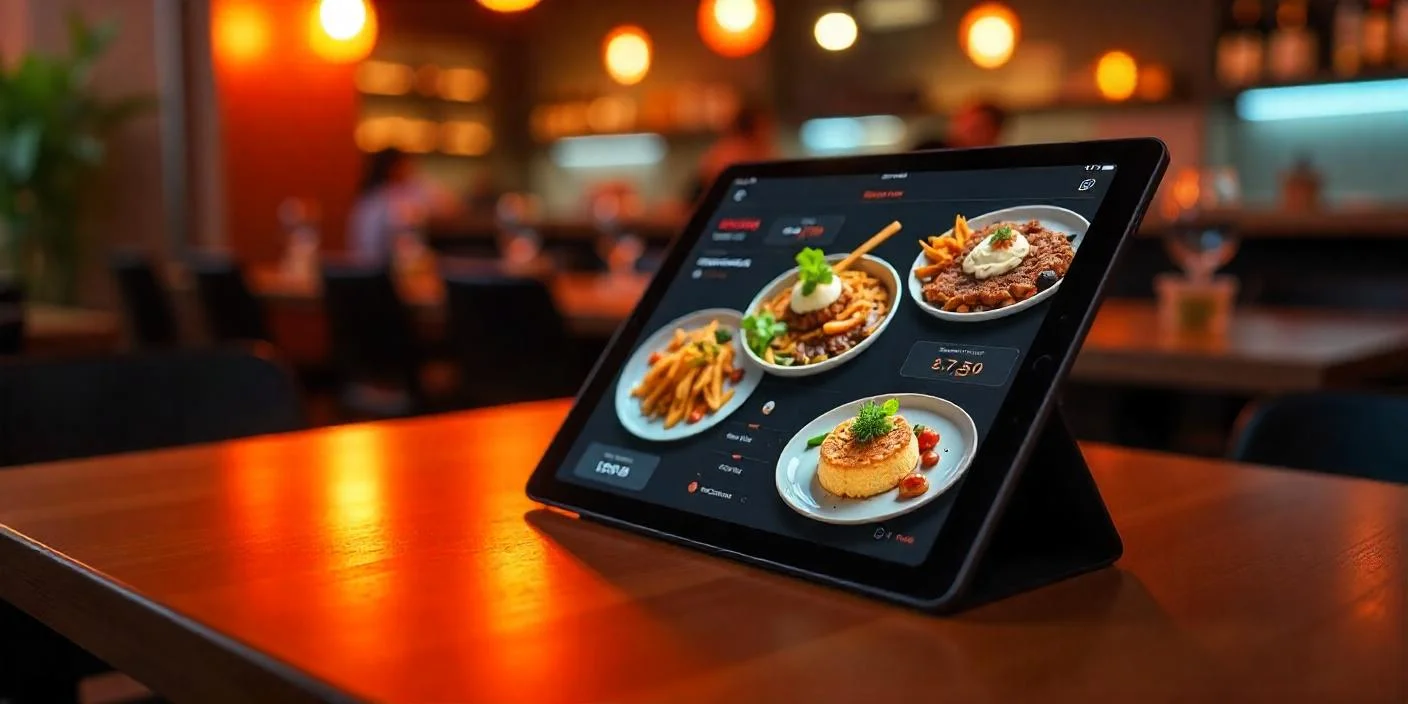QSRs are not only about fast food now; they also use technology and displays to talk with their customers more effectively. Displays are not only on digital menus; they also help provide better customer experience, increase productivity, and even increase sales. In today’s food service businesses, digital signage and QSR displays in drive-thru lanes are very important. We will take you through how signage matters in QSRs, the different displays you can use, and the role they play in running your business.
Importance of Visual Communication in QSRs
Enhancing Customer Experience through Clear Messaging
With customers wanting information fast, using visual means is very important. A simple and eye-catching display helps you choose quickly, navigate the menu easily, and order with ease. QSR displays allow customers to quickly pick what they want and are entertained while waiting for their meals. No matter if they’re digital menus or interactive signs, these screens help customers enjoy their dining experience by making things easier and more pleasant.
Streamlining Operations and Reducing Wait Times
Good signage draws in customers and manages how customers move around the business. Because QSR displays real-time information on specials, promotions, and the menu, it helps customers decide fast, which lowers waiting times. Because of this, employees can concentrate on taking orders and keeping the environment lively.
Types of Quick Service Restaurant Displays
Static Displays
While you don’t see them as often as digital displays, static displays are still useful in some budget or niche restaurants. They are most suitable for restaurants that keep their menus and decor the same.
Quick Service Restaurants Use Digital Signage
Dynamic content is a key reason why digital signage is used so often in QSRs. Thanks to digital displays, businesses can quickly show high-quality videos and update their promotional messages. Digital signage allows QSRs to quickly respond to both temporary offers and new menu items, so customers always get the most up-to-date information.
Boards at Drive-Thru Windows
These displays are meant to be open, easy to read, and fast for those ordering from their cars. The displays are designed to keep working in any weather and are easy to see from the road. Using bold letters and contrasting colors in drive-thru displays makes the service faster and helps customers feel better satisfied.
Self-Service Kiosks
Using self-service kiosks has greatly improved how customers order at many QSRs. People can look at the menu, customize what they want, and make payments using the touchscreen. This method allows the service to be faster and gives chances to promote additional products. With the help of suggestive selling, these displays help customers spend more and wait less.
Impact of Digital Displays on Customer Experience
Digital displays do more than help the business; they also greatly affect how customers feel. With digital signage, customers at quick-service restaurants get to enjoy colorful and eye-catching visuals. Having dynamic content on display keeps customers interested while they wait for their meals. These displays include features that let customers interact, which makes the overall experience both easier and more enjoyable.
Design Principles for Effective QSR Signage
Color and Typography
How you use color on your menu can affect the way customers feel about what you offer. When your headers and text use different colors, your menu is clear and noticeable, even when it’s dark. When the menu uses clear fonts and a sensible layout, customers can read and understand it without difficulty.
Animation and How the Film Is Presented
Small animations in your signage can really improve its look. For example, you can use animations to help customers find their way through the menu without it being too much for them. Try to stay still as much as you can to avoid distracting your customers. Instead, showcase your main offers or promotions with animations so your content is both interesting and clear.
Role of QSR Displays in Upselling and Cross-Selling

Screens in QSRs make it easier for employees to encourage customers to buy more. Suggesting upgrades or putting related items together helps these displays persuade customers to make certain purchases. A digital sign can advertise desserts to customers while they order their meals, helping to boost total sales without anyone having to interact with the customer. With AI, content can be adjusted to display different things at different times, in different weather, or when certain items are more popular.
Integration with POS and Inventory Systems
Modern QSR displays are more than just a place for the menu. With POS systems and inventory tools, e-commerce stores can show customers if items are currently available for purchase. When a product is out, it is instantly removed from the menu to prevent customers from being disappointed. When the front-end and back-end are integrated, the company can deliver service more smoothly.
Cost-Efficiency and ROI of Digital QSR Displays
Although paying for digital QSR displays at the start can be expensive, the returns you receive overtime make it a wise investment. Reducing printed materials, updating menus and promotions faster, and improving orders, all thanks to digital displays, can increase sales and make the operation run more smoothly. The flexibility to change the content, adjust what’s being sold, and highlight your best-selling items allows your digital displays to earn more for your store.
Maintenance and Durability Considerations
Indoor and outdoor digital signage should be tough and easy for anyone to maintain. QSR displays placed outside should be able to withstand sunlight, rain, and dirt. Tamper-proof signs that are also cleanable will last longer. Maintaining displays and using remote diagnostics will keep them working well and protect customer service from interruptions.
Regulatory Compliance and Accessibility
ADA Compliance
Adhering to ADA standards for your QSR displays makes sure everyone can access your restaurant. To include everyone, web pages should have clear fonts, good contrast, and visuals that do not flash. Your website menus should be designed so that people with visual impairments can still use them, with alternative text or audio options.
Food Labeling Compliance
QSRs must ensure their displays follow the local rules for labeling, which might mean including calorie counts, nutritional information, or a list of allergens. Integrate your digital signage with the necessary regulations to prevent facing legal problems.
Future Trends in QSR Displays
AI-Powered Personalization
In the near future, the AI used in QSR displays will help recommend meals that are right for each customer based on their past choices, what they like to eat, and the current weather. When you customize so much, customers will engage more, and sales will increase thanks to target recommendations.
Voice-Activated Menus
After the pandemic, more people are interested in using voice menus. Speaking to the menu display is safer and more accessible, making it easy for customers to navigate.
Augmented Reality Integration
There are QSRs that are exploring AR, so customers can see their orders in 3D or enjoy virtual games on the menu. As a result, customers are more likely to spend more time in the restaurant, which makes the experience more enjoyable for everyone.
Sustainable Technologies for Display
With sustainability growing in importance, QSRs are switching to LED lighting, using recycled screens and even solar power to help the environment and keep their stores attractive.
Ready to Take Your QSR to the Next Level?
Installing digital displays in your QSR can improve service for your customers, simplify how you operate, and raise your business profits. No matter if you want digital signage, menu boards, or kiosks, they are essential for updating your restaurant. Feel free to reach out now to find out how QSR displays can benefit your business.
FAQs on Quick Service Restaurant Displays
1. Are digital QSR displays suitable for small restaurants?
Scalable display systems can be found to fit any size budget. Just one screen can go a long way in boosting your brand’s visibility and improving how you operate.
2. Can I update all my locations’ menus remotely?
Absolutely. Managing many outlets from a single point is possible with most digital signage systems that use cloud-based management.
3. Do digital displays work in outdoor drive-thru areas?
Today’s QSR displays are designed to function in any climate thanks to their anti-glare, waterproof, and temperature-resistant specifications.
4. Is special training required to operate these systems?
You don’t have to go through a lot of training. The majority of digital signage software is built with a simple drag-and-drop interface that allows in-house teams to operate them easily.
5. How often should I update the content?
Refreshing your content every week or in line with campaigns is the best practice. Making real-time updates for breakfast, lunch, and dinner can help the campaign work even better.







